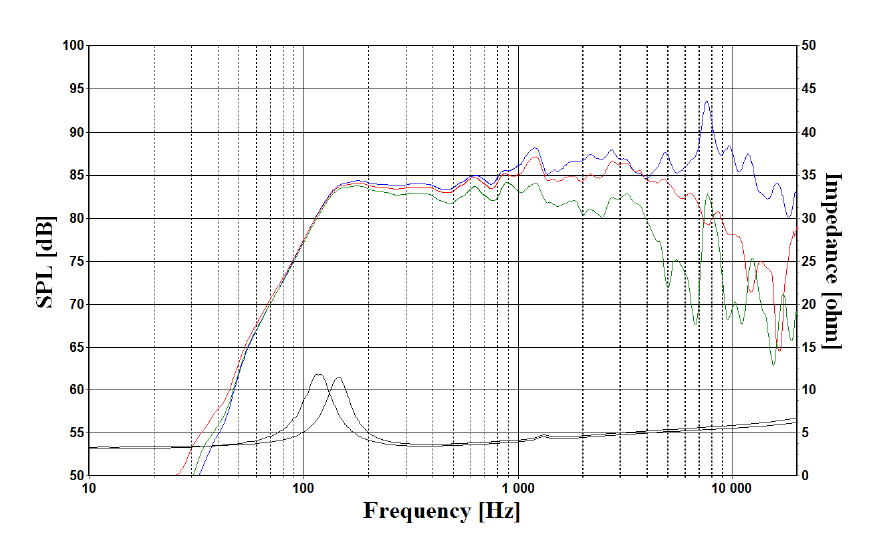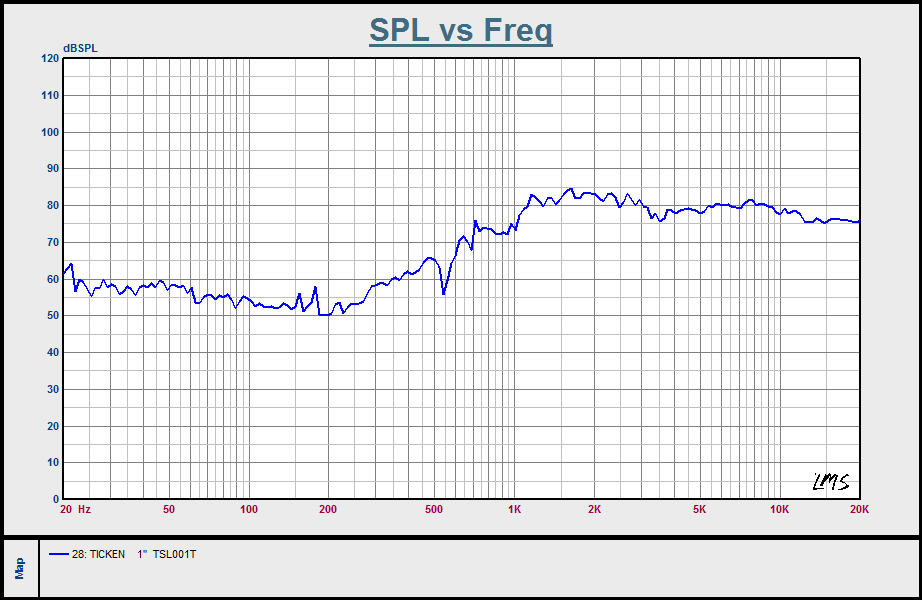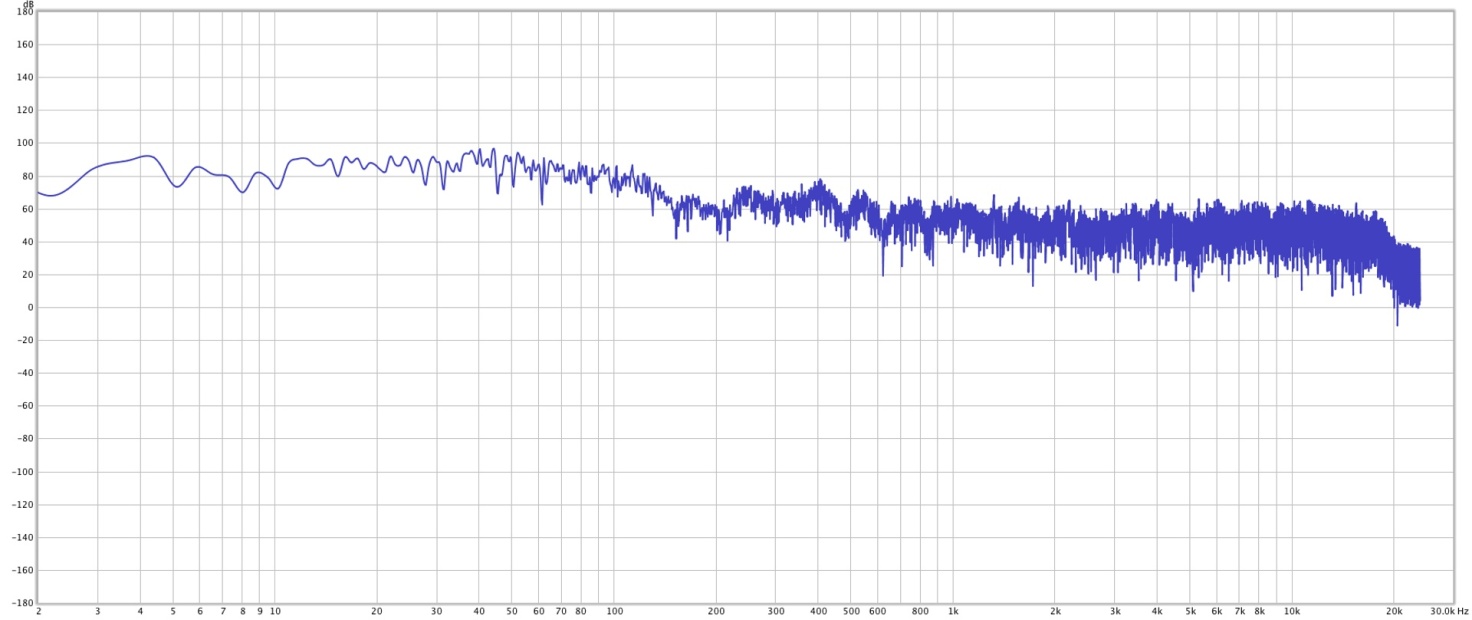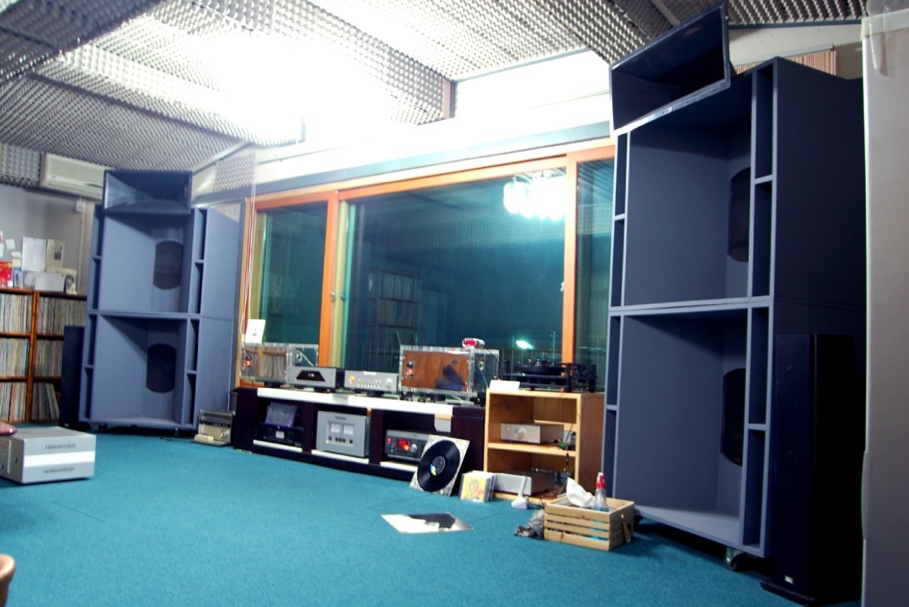
Review
Prologue
I completed my college education in Musician Institution at Hollywood, CA with Audio Engineering degree.
Audio Engineering major generally center educational focus on recording and editing processes in studio and live stages,
but auditory training for classification of various frequencies for successful sculpting of music pieces
during the final mastering process is also an important part of the course.
This means that learning the ability to accurately record, mix, and master the sound at play is very important.
This also further implies that for recording and mastering of the record,
accurately distinguishing the sound unbiased by the particularity of the speaker is more critical than anything else.
This provided me the capability discuss the sound personality and specification of each speaker.
This had been my first time in listening to the sound of TICKEN SOUND LAB system.
Listening session was carried out alongside with the CEO of TICKEN SOUND LAB.
My impression of the sound was, for lack of better words, "inspiration" itself.
4 inches full-range speaker driver, more petit than other brand's speakers,
incessantly poured out sounds that immediately drove around my whole body.
The clarity of the tweeter was more than facile enough to gracefully refashion the sounds well above 1kHz.
Let's now discuss TSL-FG001A Full-Range UNIT and TSL-001T tweeter of TICKEN SOUND LAB.
1. RTA (Real Time Analyzer)
Prior to the discussion, I would like to make a note on an important aspect to consider.
Most will be unfamiliar with the term RTA (Real Time Analyzer), but it is crucial to note that this device cannot be fitting for general and personal audio auditing.
It is regretting that this device became recently known for quality measurement of sound for all speaker types.
Let's listen to Daejeon Health College Broadcast Production Technology Division professor SungHoon Kang.
“Audio quality measurement commonly gets misperceived.
The quality of sound cannot be determined solely by its spectrum; nevertheless, sound often gets perceived as high quality if the spectrum record is even.
In many cases, audible sound is low in quality due to unbalanced acoustic measurement and auditory sense despite proportional spectrum is yielded from RTA.
This is to be blamed on RTA’s lack of information.
The spectrum only provides the amplitude information and omits the phase information,
this means that user is only able to obtain amplitude information and completely miss out on the phase characteristics.
Even if the dip is altered through equalizer in amplitude characteristics,
it will not affect the phase details. Further,
it is premature to determine that high quality sound will be yielded from even RTA analysis results.
Additionally, RTA cannot analyze time frame data.”
This argues that RTA is only able to measure the sound pressure (volume) of each frequency (hertz) yielded from the speaker and does not qualify to determine the quality of sound.
This is something that I completed agree.
One simple example will be where a statement “mother’s cooking is the best” can hold truth, but because all mothers are different,
it cannot definably imply that all mother’s cooking is the best. Did this make sense? To put it more easily,
it could hold true that putting more seafood in your pasta can make the pasta better,
but this cannot be solidly proven until you know of the origin and freshness of the seafood.
Can RTA be the definite sound quality measuring tool when even seafood pasta has so many differing factors?
It still pities me to see RTA image go around online as symbol of best car audio tuning.
Before I start the discussion of the speakers I listened to,
I feel that it will be proper to first talk about TICKEN SOUND LAB’s COLLABORATOR,
SEAS (www.seas.no).
Claiming its independence from Norwegian radio manufacturer Radionette and Tandberg in 1950, SEAS poured their effort in research and manufacturing of speakers for more than 60 years.
SEAS is now somewhat of a celebrity in the European speaker manufacturer market for remaining in business for more than half a century and for their strong R & D supported
by firm philosophy of design. Philosophies which are “We make our own parts” and “Quality first”;
it could be simplified to “In-House” and “Quality”. As a person who personally listened to both of the mentioned speakers,
I cannot help but agree that the sound quality completely corresponds to their design philosophy.
3. TSL-FG001A, Full-range Speaker
In retrospect to the flood of emotion I have felt when I first heard the sounds of this speaker;
I highly suggest that you experience the sound first hand rather than reading the description in this article.
The sound emanated from this speaker is rich, composed and crisp in all frequency ranges.
Audio engineers consider up to about 14 instruments at all time,
because symphony of entire variety of instruments such as drum, bass, piano, guitar, vocal,
and other is required. Recording of even single instrument requires incorporation of numerous frequencies.
Even acoustic piano requires minimum frequency coverage of 80-120Hz, 2.5-5kHz, and 10kHz.
Audited and mastered products such as CD, DVD, or computer files (Flac, MP3, Compressed, Hires files) considers countless variety of speakers;
thus, get transposed to the listeners as incalculable sound depending on the combination of types of speaker and amps.
For this reason, we make investment to get higher quality of sound and go through agonizing decision process.
Unlike you would do for wide space speakers for home, office, auditorium, or concert hall,
the mind-aching decision process deepens even more when it comes to car speakers due to sound quality dependency on the speaker from space limitation.
This further implicates the important role of speaker due to the proximity of the speaker to the listener. Below is the RTA analysis done by TSL-FG001A’s manufacturer.

As previously mentioned, the listener cannot and should not expect to predict entire details of the speaker from RTA graph alone.
Thus, if must be done, the analysis shows slight dip between range of 1.5~2.3kHz, but negligible at about 2dB and able to digest all types of music.
The graph is adequate to listen to in the car for below two reasons.
First, the graph covers from 100Hz through 1kHz. Each are separate,
but sound saturation of instrument and vocal gets determined between the range of 100~300Hz.
With such, graph between 150Hz~100Hz delivers steadily without fluctuation.
Second is the graph of 1k~10kHz. The graph drops after 8kHz, but purchase of tweeter along with the speaker eliminates any concern.
Most can achieve satisfaction with the replacement of tweeter alone, because ordinary speaker cannot display such graph and can only cover range of 3~4kHz.
If the speaker is able to play the above range of frequency, it deserves the name of Full-range unit as mid-range speaker only covers the mid-range sounds.
Capability to play frequency over 1kHz is important, because music tells all of its story in this range.
All frequency is important, but punch, clarity, reality, and lucidity of the music get delivered in the range of 2.5k~10kHz.
As such, this speaker displays extremely enthralling graph along with the sound.
Most car audio shops suggest installation of mid-rage drivers, but CEO of TICKEN SOUND LAB decided to install a full range driver after long thought.
He anxiously wished to know its results after decision. All muscle aches from the installation washed away as soon as we heard the sound.
As a professional in the field, I highly suggest installation of full range driver.
4. RSL-001T Tweeter
This also is one amazing item. I really hope it will be purchased along with the above item. Let’s first look at the graph.

This graph is generally appeasing although it does have a dip at 3.5kHz, but this should not cause much trouble since it is only 2dB.
The part that is most captivating is rising curve from 6kHz to 10kHz.
Sound is more audible to human ears at the range of 1kHz~2kHz when the sound is played in the identical volume; sound is less audible from 4kHz.
I was taught that doubled sound is 6dB. There are some that indicate 10dB by experience, but 6dB seems to be most proper.
3 dB = twice the power (Power respectively intensity - mostly calculated)
6 dB = twice the amplitude (Voltage respectively sound pressure - mostly measured)
10 dB = twice the perceived volume (Loudness nearly sensed psychoacoustics)
The graph spikes to 3dB at the range of 6kHz~10kHz, this is a proper sound pressure (volume) increase.
Because of this, we are able to hear the sounds of electric and acoustic guitar’s high pitched sound,
vocal’s sibilant, kick drum’s tapping sound, drum’s hi-hat, and cymbal’s reverberation more closely.
The full-range driver most likely took an important role,
but this spike allowed the sound of Jazz vocal to be intimately attractive and live Hotel California’s guitar performance sound more bursting.
5. RTA Measurement After Installation
RTA measurement had been carried out when auditory test with CEO of TICKEN AUDIO LAB was carried out. It is as below:

The analysis was done by BMW 528i (E60) with four full range drivers and two tweeters.
As you see, the result is showing a very satisfying graph.
There can be many ways to analyze RTA results, but this should be used solely as a reference.
According to so called specialist, this graph can be considered fairly even graph. All frequency is being generated with stability.
Our CEO won’t be too happy, but let’s stop the discussion about RTA here.
6. Subwoofer TSL-SWS001
Lastly, let’s discuss the sub-woofer. TICKEN’s sub-woofer is manufactured by Earthquake (US), company famous for its patents on SWS (Shallow Woofer System). This system is its specialized technology that is effective in creating low frequency sound in limited space and low degree of power. Let’s take a look at a picture.

Can you tell the magnitude of its size? Subwoofer commonly covers the sound that is below 100Hz,
thus requires such magnitude of size, because amplitude of vibration increase as Hz decreases.
For the same reason, tweeter is able to create the high Hz sound with its small size since higher Hz creates lower amplitude.
How do we install such sized subwoofer in a car? Technology developed for to solve this problem is SWS technology.
In a car, creating a small size speaker with capability of effectively producing low Hz sound is vital.
Why is sound present below 100Hz so important? What sound is below 100Hz? There are quite a lot of sound below 100Hz;
some examples are horse hoof sounds, bass guitar, drum, engine… it actually exists in any instruments.
It also exists in our voice. The audible frequency’s lowest range can also be heard through other parts of your body beside your ears.
The low frequency internal injury that you have seen in cartoons, those are the lowest range frequency.
Anyone who experienced the sound of subwoofer at first hand always places this speaker as one of most important speaker line-up,
though people inexperienced in the field could perceive it indifferently.
What kind of sound can the listener hear from TICKEN SOUND’s subwoofer and how much of a necessity is it?
Conclusively, installation is suggested if there are enough budgets;
but, if not, it could be postponed.
Further, I could proudly say that TICKEN’s subwoofer is the optimum choice of speaker to enjoy the lowest frequency sound without noise.
Space given for inside of a car is very limited.
The sound we experienced after replacing the original woofer of BMW to TICKEN subwoofer was sensational.
As previously mentioned, low frequency sound should be absorbed not just through your ears,
but through your whole body. Sound of TICKEN subwoofer transmitted faithfully
throughout my body without intuition and spoke like an upstanding loyalist.
Like the woofer in the picture above, subwoofer is better in larger sizes.
Unfortunately, I have never, to this day, encountered a satisfying subwoofer sound in a constricted space of a vehicle.
Because subwoofer covers the frequency range that’s low enough to cause vibration in someone and other objects,
noise created by this vibration is its Achilles’ heels.
When subwoofer is used inside of a narrowly spaced vehicle, all type of car parts like bolt pitch and center fascia pitch will start to make noises.
But, could it be due to SWS technology? TICKEN’s subwoofer’s sound was significantly different.
Sound radiated from the 8 inches subwoofer absorbed any type of genre with no noise what so ever.
Subwoofer and woofer are different speakers because woofer covers the range of 100~250Hz.
This implies that we have been cheated by swindler and hawkers with no knowledge in audio system.
All subwoofers that we have purchased until now did not even get close to playing the sound of real subwoofer.
There are much more I could discuss about this topic,
but I will cut short here. TICKEN’s subwoofer more than deserves the name “SUBWOOEER”.
7. Epilogue
It took me a while in deciding which tone to apply in writing this review,
because I did not wish to write this review with difficult terminology.
I wanted to write a review that is easily understandable and displays my voice.
Quality decision of sound is subjective. One could love the sound one day and come to hate it in the other,
but sound of a quality speaker builds its satisfaction with time.
This review is based on listening session in BMW 528I (E60) with replacement of a speaker while all other parts remain untouched.
This review was carried out in BMW 528i(E60) with all other parts except speaker untouched to specify the characteristics of the speaker.
One of the recognizable strength of SEAS speaker is its ability to assimilate any type of music genre.
The listening test was carried out for any condition imaginable, in different genres, in rain, in underground parking, outdoor parking, highway,
local speedway, drinking coffee and water, and many others; regardless of the situation, it perpetually played sound quality that exceeds its price.
I’m confident that anyone will feel the need to spend more money in purchasing other speakers after they experience the sound of TICKEN’s speakers.
There is no doubt that current domestic car audio market is filled with dishonest peddlers.
Import car audio dealers never ceased to disappoint me in a consumer standpoint.
The dealers’ egotistical arrogance was unbearable and sound demo I have done at the expensive and famous CAR AUDIO SHOP presented anything but inspiration.
Even having a demo session or consultation was denied when dealers didn’t feel like there will be a purchase.
I further concluded that there are many who excel in their honesty and technology, but no one worked to achieve “SOUND SOLUTION for consumer satisfaction”.
I was able to understand why brand “S” is able to lead the market with incomprehensive price and reason.
(I hope and want to believe that this is a misunderstanding for small portion of the market.
I cannot visit every speaker stores so it can possible that these stores had nothing to do with stores that work to satisfy the consumers
by seeking for the true sound at the consumer standpoint.
I decided to maintain this belief with bitter taste remaining.)
This could be the reason why I didn’t expect much from listening session of TICKEN SOUND Lab. SOLUTION,
but the SOLUTION gave me much more than what was expected.
I look forward to the launching of TICKEN SOUND Lab..
I also look forward to impact TICKEN SOUND Lab.’s new wave of products will have on distorted CURRENT AUDIO market with hope
that there will no longer be any consumers extorted from car audio purchases in the future.
Steve (Jungwoo) Lee
Recording Engineer









